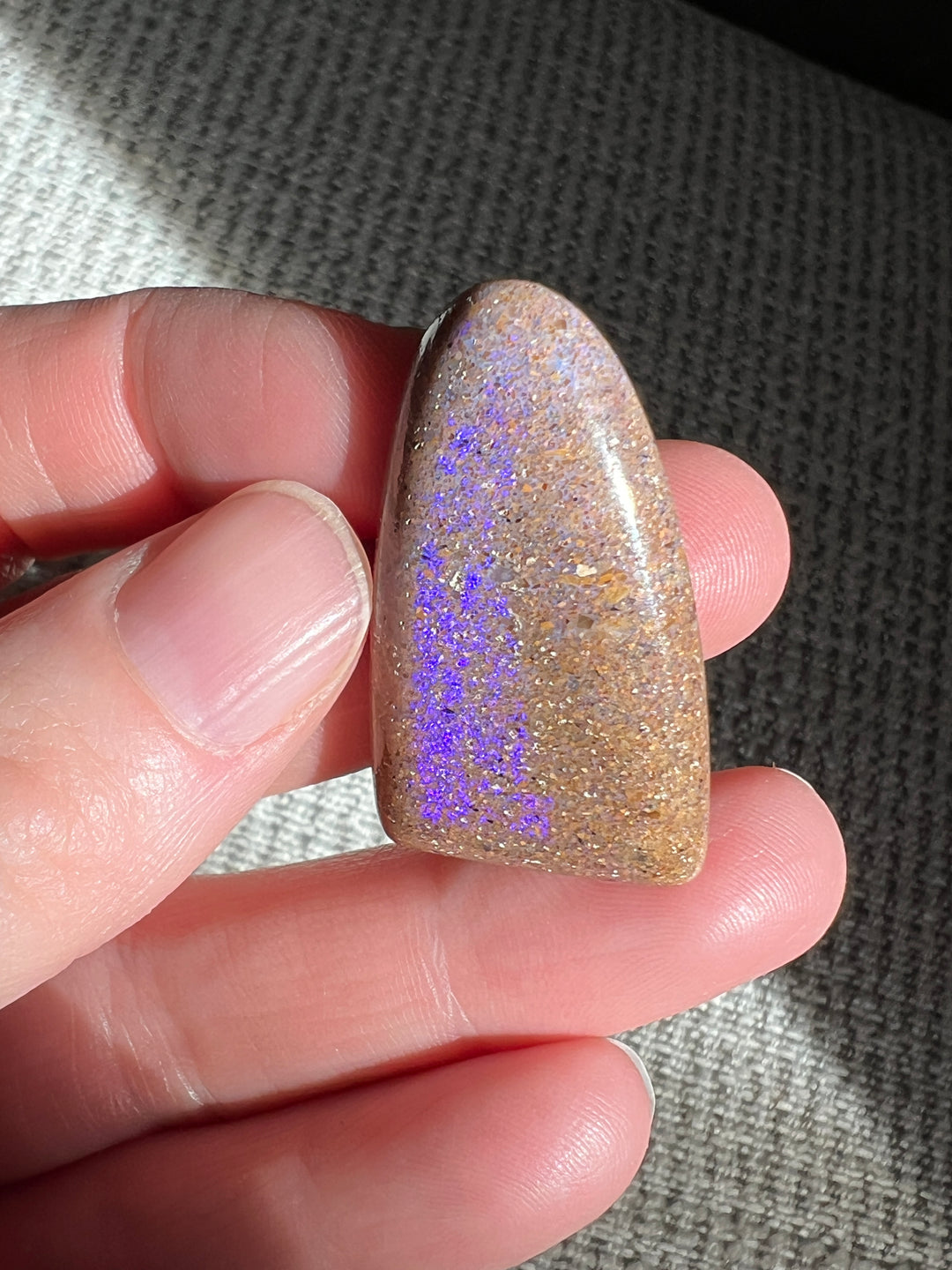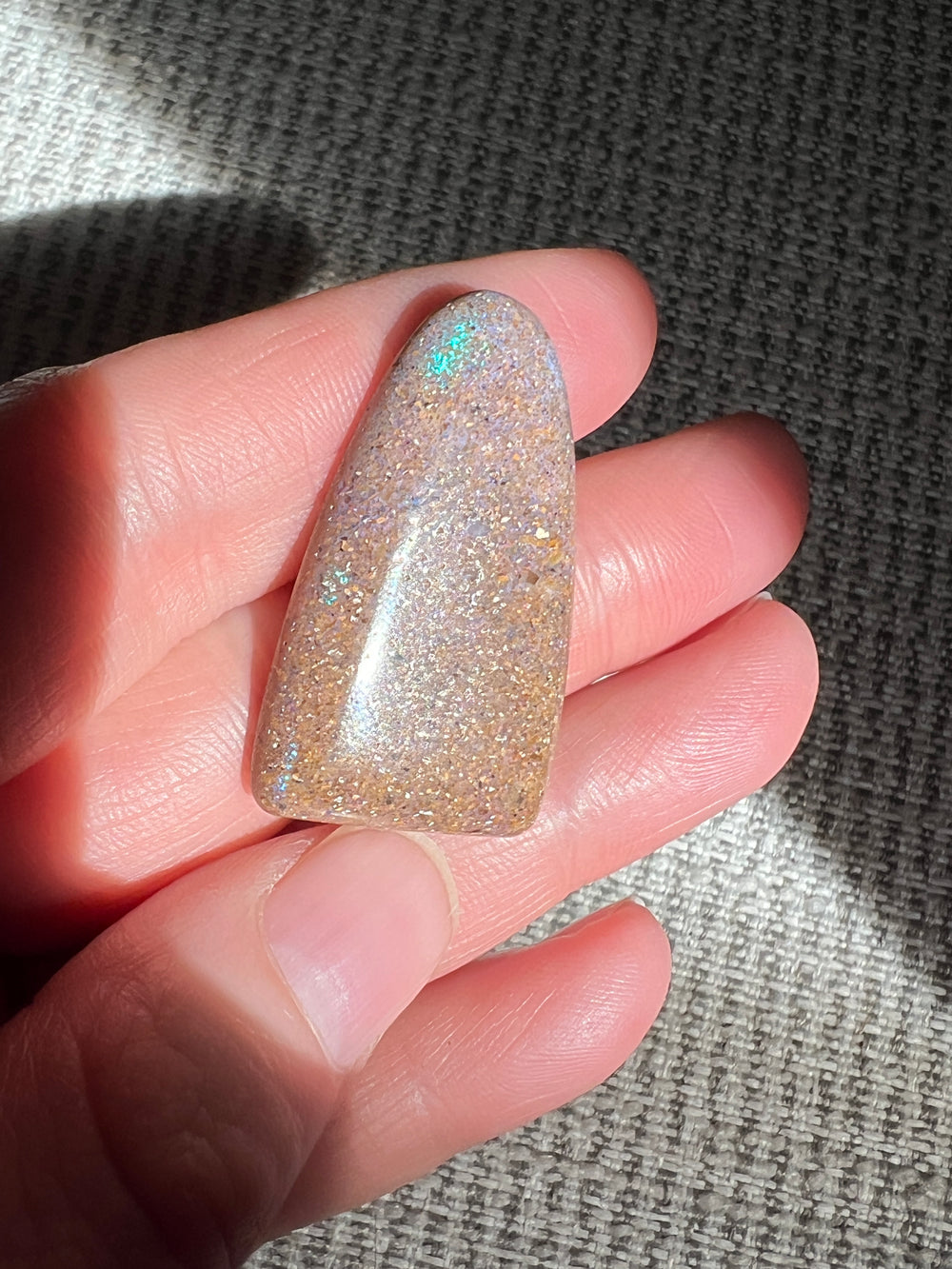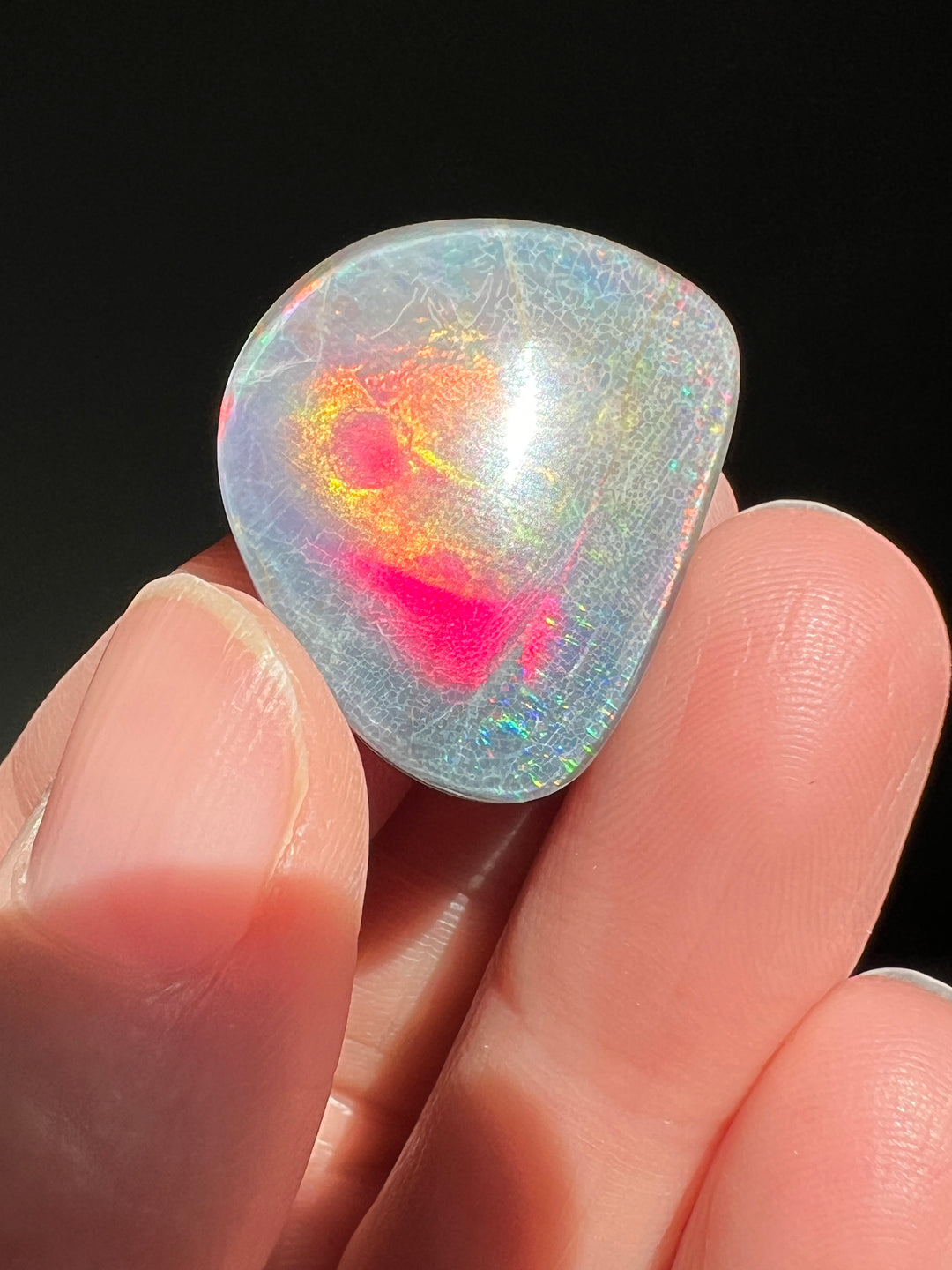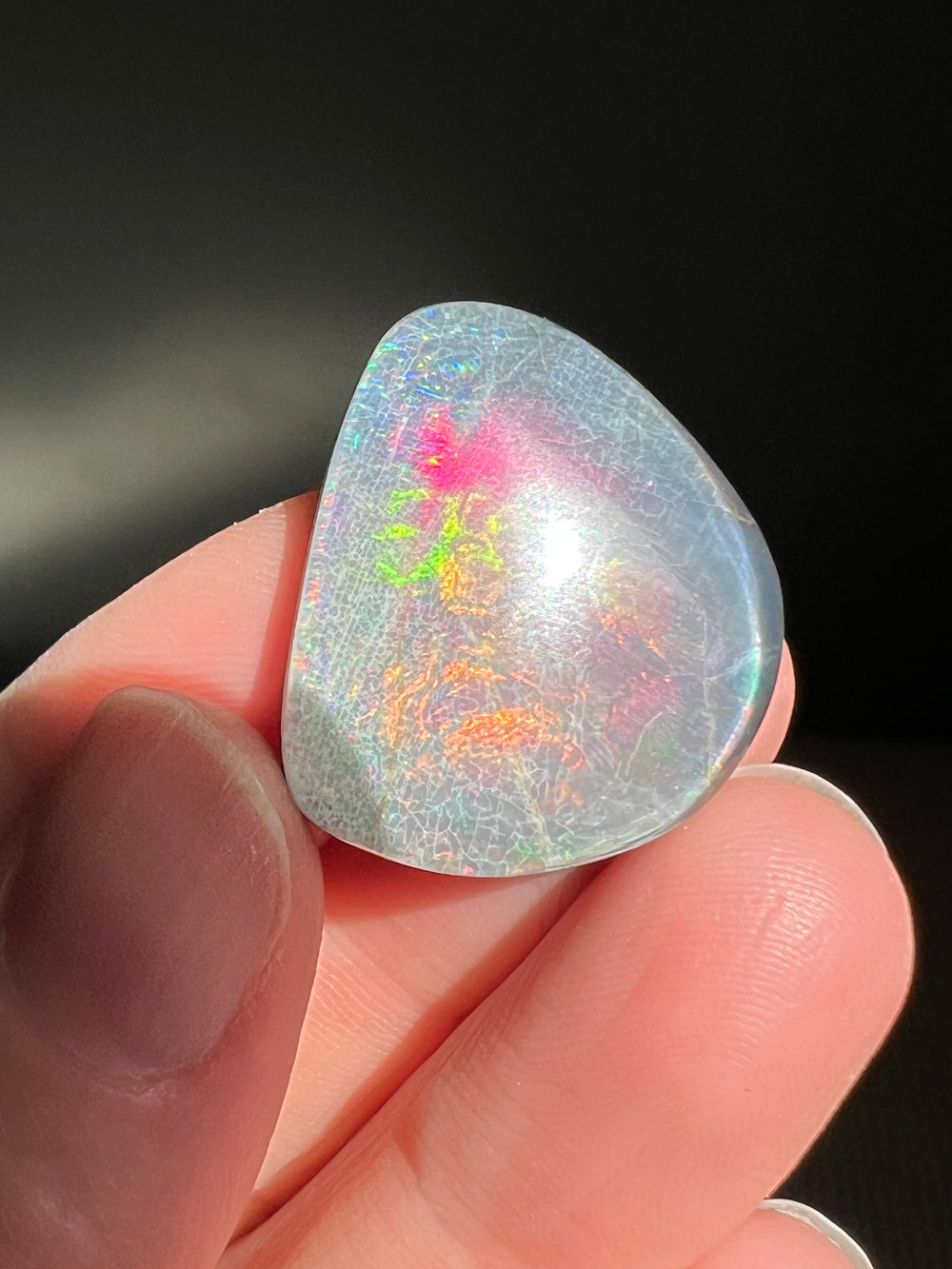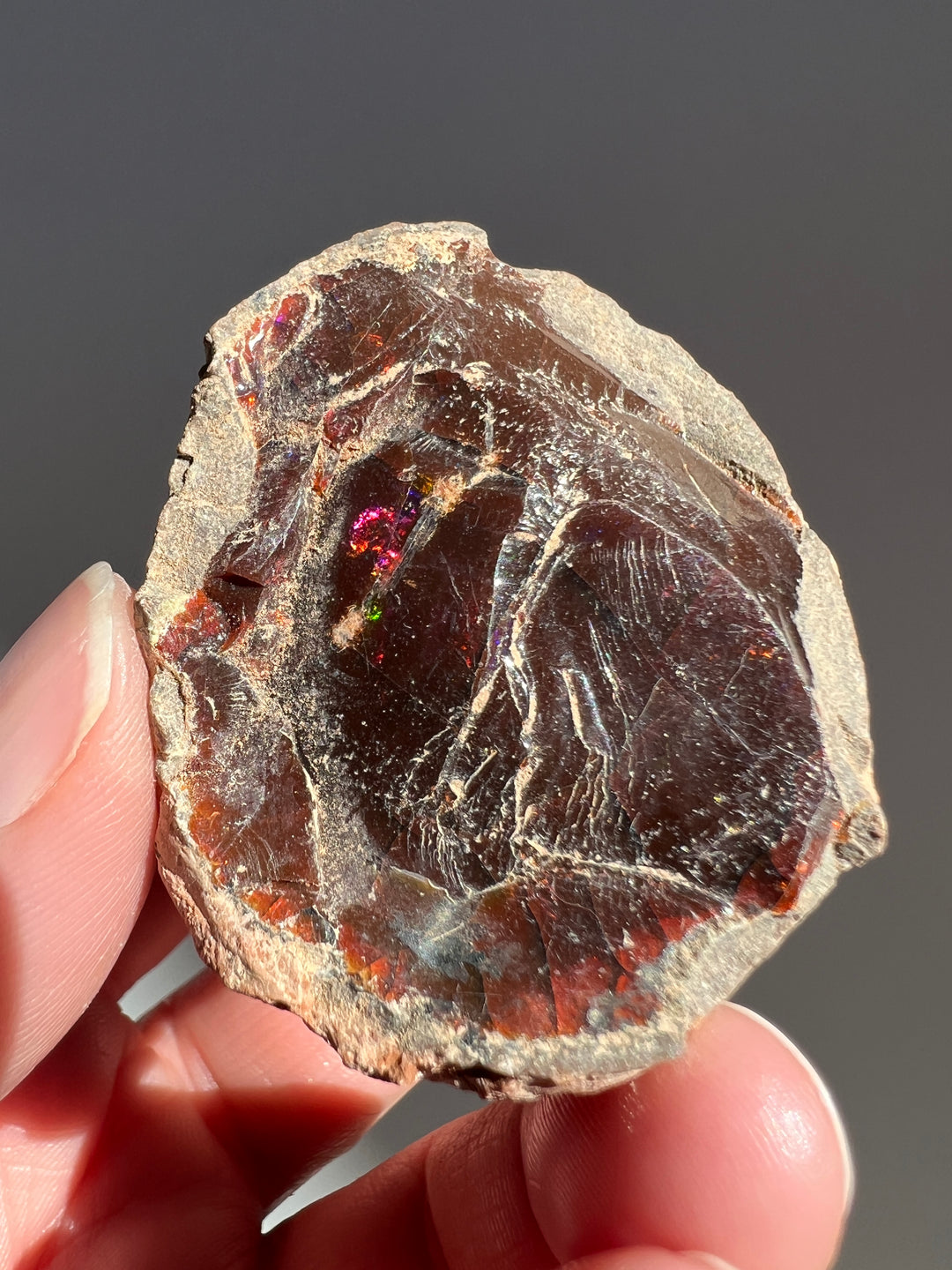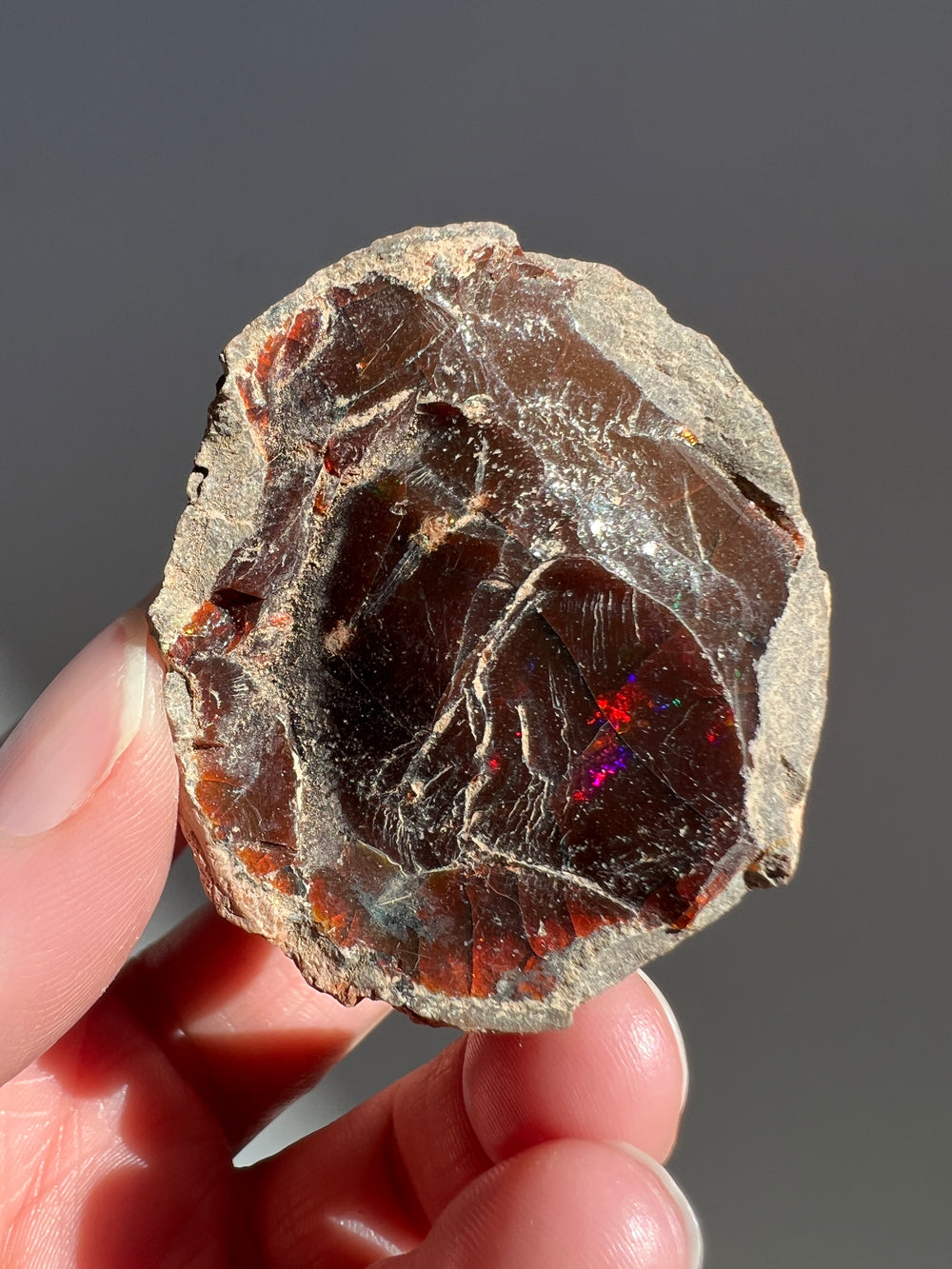Geological & Scientific Properties | Opal
Opal is a unique and highly prized gemstone, known for its dazzling play-of-color. It is a form of silica (silicon dioxide), chemically similar to quartz, but with a water content, which can range from 3 to 21% by weight. Here's an overview of Opal's geological and scientific properties:
Chemical Composition and Structure:
- Composition: Opal is a hydrous form of silica (SiO₂·nH₂O). Its water content can vary, which can influence its physical properties.
- Crystal System: Opal is amorphous, meaning it lacks a defined crystal structure. This characteristic distinguishes it from crystalline forms of silica like quartz.
Physical Properties:
- Color and Play-of-Color: While opal can be found in many colors, including white, black, and fire opal (orange to red), it is most famous for its play-of-color – the ability to diffract light into various colors.
- Hardness: Opal ranges from 5.5 to 6.5 on the Mohs scale, making it relatively softer than many other gemstones.
- Luster: It exhibits a subvitreous to waxy luster.
- Transparency: Opals can be transparent, translucent, or opaque.
Optical Properties:
- Play-of-Color: This phenomenon is caused by the diffraction of light off of tiny, regularly spaced silica spheres within the opal. The size and arrangement of these spheres affect the colors observed.
- Refractive Index: The refractive index can range from about 1.37 to 1.47.
Geological Occurrence:
- Formation: Opal forms at relatively low temperatures and is typically found in fissures, veins, and cavities of igneous, sedimentary, and metamorphic rocks. It can also be a product of hydrothermal processes.
- Associated Minerals: Commonly found with limonite, sandstone, rhyolite, marl, and basalt.
Major Deposits:
- Significant sources include Australia (which produces most of the world's precious opal), Mexico (known for fire opal), the United States, Honduras, Indonesia, Brazil, Ethiopia, and the Czech Republic.
Opal is valued not just for its beauty but also for its uniqueness; each stone's play-of-color is distinctive. Due to its water content, opal can be prone to drying out, cracking, or losing its color, and therefore requires special care. It has been revered since ancient times, associated with luck and magic, and continues to be a coveted gemstone in jewelry and ornamentation.


